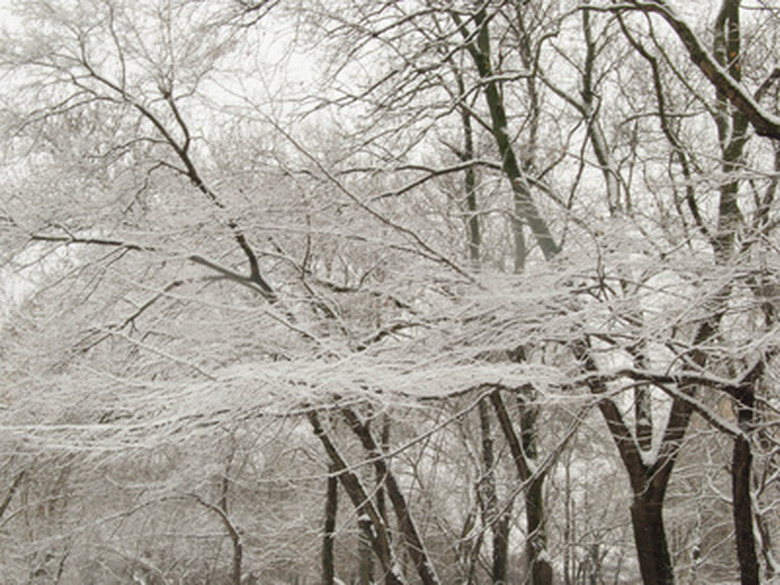Tree Trimming In Wisconsin
The difference between late winter and spring is often imaginary in Wisconsin; the last big snow of the year has taken place as late as early May, and Memorial Day weekend may include folks out mowing lawns. Because most trees should be trimmed in late winter, Wisconsin gardeners are challenged to get their pruning tools cleaned while drifts still stand deep and get to work while the ground is muddy.
Time Frame
The USDA Forest Service and other experts agree that the best time to prune or trim trees is during their dormant season in late winter. In Wisconsin, late winter ranges from late January through February in the south to early March in the north; the Wisconsin Department of Natural Resources (DNR) suggests trees may be trimmed anytime after dormancy sets in during November until March. When tree buds start swelling or the neighbors tap their maple trees, the opportunity to prune trees has just about slipped away.
Basics
Branches should be trimmed, and branches growing across other branches and branches that grow at an extreme angle from the trunk should be removed to keep the tree strong and healthy. Thinning crowns by removing branches growing into the center is most easily accomplished when the tree is clear of leaves. If this basic work cannot be completed in late winter, the DNR suggests doing only that pruning that can't be left until November in mid-summer after leaf growth is finished. Most of this growth is complete by the end of July in Wisconsin.
- The difference between late winter and spring is often imaginary in Wisconsin; the last big snow of the year has taken place as late as early May, and Memorial Day weekend may include folks out mowing lawns.
- Because most trees should be trimmed in late winter, Wisconsin gardeners are challenged to get their pruning tools cleaned while drifts still stand deep and get to work while the ground is muddy.
Considerations
In addition to shaping and the removal of suckers and water shoots, Wisconsin trees often need restorative trimming because of the state's active tornado season and periodic storms with high winds. Although broken limbs should be removed or trimmed right after a storm to prevent further damage to the tree, plans can be made for re-shaping the tree in fall after the leaves have dropped.
Fruit Trees
Wisconsin orchards produce major crops from apple, pear and various stone fruit trees. The University of Wisconsin Extension provides educational materials on training and trimming these special trees to keep them productive. The main effort should concentrate on shaping young trees to open crowns to allow light and air inside and on removing crossing branches or branches that rise at too sharp an angle from the trunk. Prime pruning time for fruit trees is late winter or after bloom time, usually in June or July. Any trimming will affect the year's fruit production; once the young tree has been trained, trimming should be limited to shaping and "tipping" to encourage branching.
- In addition to shaping and the removal of suckers and water shoots, Wisconsin trees often need restorative trimming because of the state's active tornado season and periodic storms with high winds.
- Any trimming will affect the year's fruit production; once the young tree has been trained, trimming should be limited to shaping and "tipping" to encourage branching.
Warning
The DNR and organizations like Plant Amnesty warn against topping or "pollarding" trees. This technique is commonly used in Wisconsin to tidy trees that have been damaged by storms or trees that are growing into electric wires. If a tree has overgrown its spot or is heavily damaged, it should be replaced rather than topped, sheared or stripped on one side.
Native Trees
Wisconsin native trees need less care and require less pruning than non-native trees. Try deciduous maples, hawthorns, cherry, elms, ashes and birches or conifers like balsam fir, junipers, pines and spruces for lower-maintenance trees.
